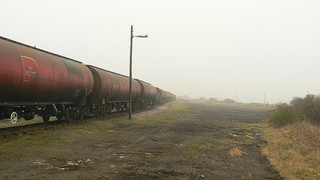Railroads and Feds Reach Short-Term Agreement to Boost Safety for Oil Transports

Following a series of accidents and explosions related to rail transport of the U.S.’s growing oil production, railroad executives and the Department of Transportation have agreed on eight new steps the industry plans to implement immediately. The agreement specifies that railroads will:
• Reduce the speed limits for trains within certain heavily populated areas
• Increase the frequency of train inspections
• Increase the frequency of track inspections
• Add more braking systems to existing trains
• Improve community relations and communications regarding the transport of oil by rail through their areas
• Increase the training for emergency workers who are charged with addressing these accidents
• Use updated rail traffic routing technologies
• Improve the safety technology trackside
All of these measures are completely voluntary on the part of the railroad companies, but some companies took the proactive approach and have already started these steps. Though these measures go a long way toward improving the safety of transporting oil, some say it isn’t enough. Critics of the measures point out that the measures do not address tank car standards nor improve the way railroads classify oil as a hazardous material.
Other critics wanted to see the federal government force the railroads to retire older tank cars, specifically the DOT-111 tankers, due to their increased probability of rupturing in rail accidents. The critics also wanted to see the government force the railroads to reroute oil shipments through the most heavily populated cities, as well as some environmentally sensitive areas.
The railroad executives and Department of Transportation are still in negotiations over additional long-term measures, but these measures agreed upon are for immediate implementation. About ten percent of the daily oil production in the U.S. is shipped by trains, which amounts to between 80 and 120 cars full of oil per day. These shipments move all over the country, as well as to Canada, to refineries.







